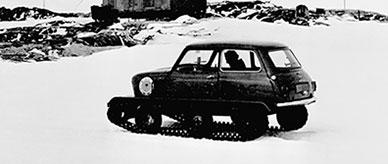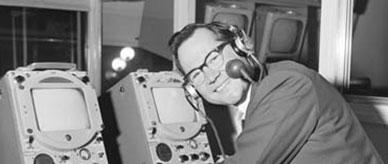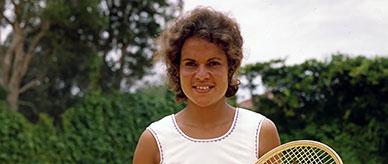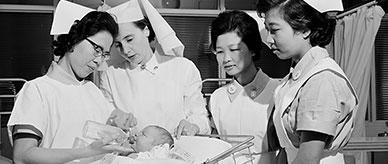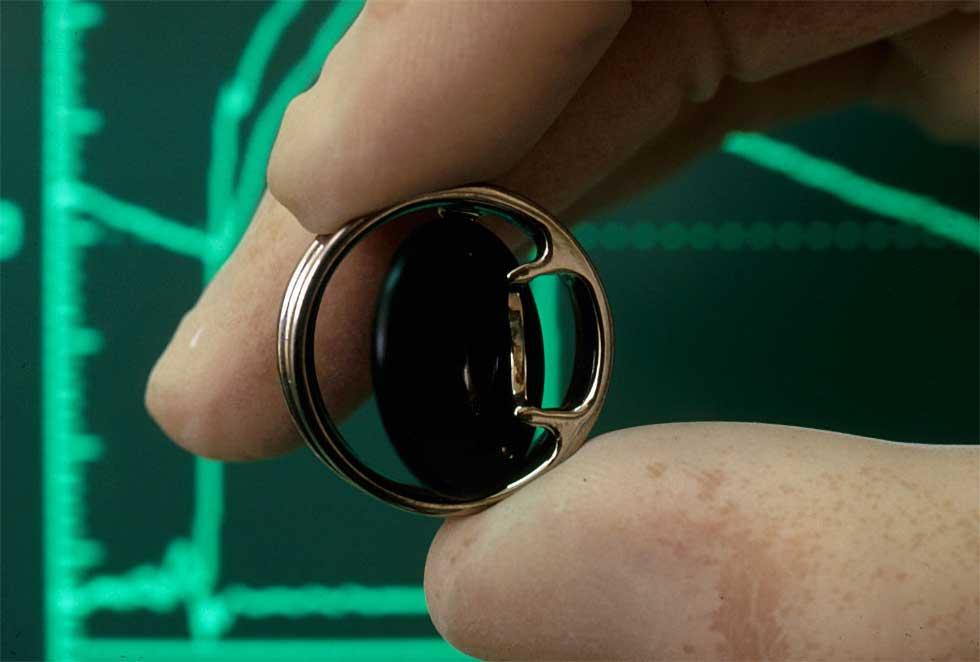


About this record
This enlarged colour photograph shows the artificial heart valve pioneered by Dr Victor Chang (Yam Him). Known as the St Vincent's Heart Valve, it is seen from the front and shows a pivoting disc surrounded by a thin metal exterior. It is held between gloved fingertips in front of what appears to be a diagnostic computerised regulation thermography (CRT) screen.
Educational value
-
This artificial heart valve has saved hundreds of lives since it was developed in the early 1990s and is an example of the great contribution of Dr Victor Chang (1936–1991) to heart surgery. The valve was developed and produced in conjunction with St Vincent's Hospital, Sydney, and a team of overseas researchers as a result of Chang's concern at the lack of donors for heart transplants. The valve has saved many lives in Australia and South-East Asia.
-
Artificial heart valves such as the one seen here are used to replace damaged heart valves. Four valves control the flow of blood into and out of the heart, each of them permitting the flow of blood in one direction only. A deteriorating heart valve can allow a backflow of blood and cause a heart attack. The valve seen here uses a disc that swivels back and forth to control the flow of blood. Valves from pig hearts have also been used.
-
Dr Chang was instrumental in the establishment in 1984 of the National Cardiac Transplant Unit at St Vincent's Hospital, Australia's leading centre for heart and lung transplants. While the first heart transplant in Australia was performed at St Vincent's in 1968, success rates were poor until improved anti-rejection drugs became available in 1980. Dr Chang led a team of 40 in performing heart and lung transplants for the following decade.
-
Chang's world-renowned team successfully performed hundreds of heart transplants, the first being on 14-year-old Fiona Coote. He did not confine his work to Australia, and did a great deal to promote better cardiothoracic care throughout Asia in the 1980s, until his death in 1991. At that time Dr Chang was working on the development of an artificial heart.
-
Born in Shanghai to Australian-Chinese parents and moving to Australia as a child, Dr Chang began his specialisation in cardiothoracic surgery during his internship at St Vincent's Hospital. He gained experience at Brompton Hospital, London, and the Mayo Clinic in the United States. In 1972 he returned to St Vincent's for the rest of his career, developing an internationally recognised heart-transplant program. In 1986 he was made a Companion of the Order of Australia (AC).
-
On 4 July 1991 Dr Chang was killed when he was forced off a Sydney road and shot dead. Initially, his death was seen as a routine robbery. However, Sydney Triads (Chinese criminal societies) were implicated in his murder as part of an extortion attempt on his family. Dr Chang's legacy raising the profile of heart transplants in Australia and the pioneering of new technology continued with the founding of the Victor Chang Cardiac Research Institute in 1994.
Acknowledgments
Learning resource text © Education Services Australia Limited and the National Archives of Australia 2010.
Related themes
Need help with your research?
Learn how to interpret primary sources, use our collection and more.

